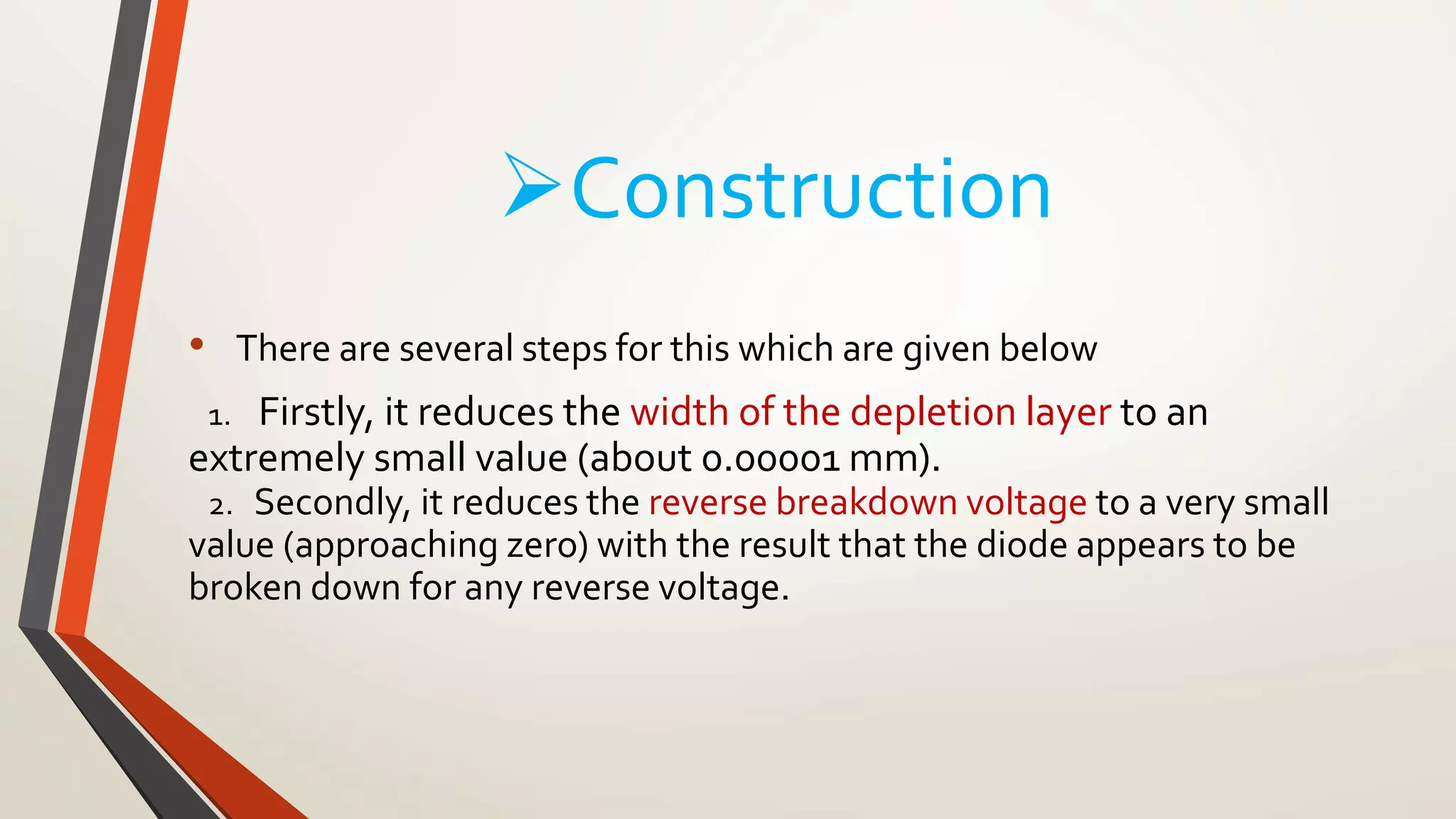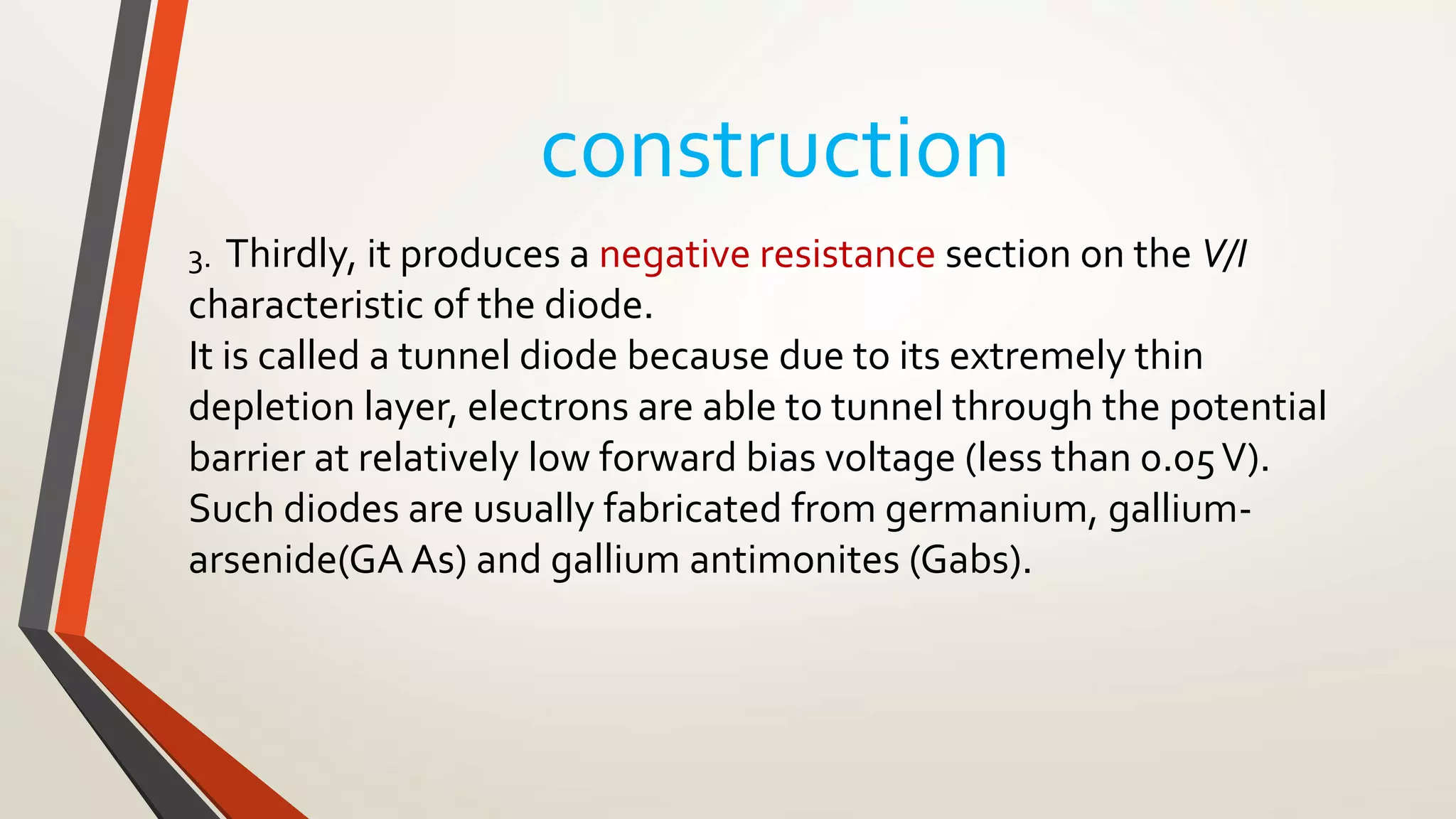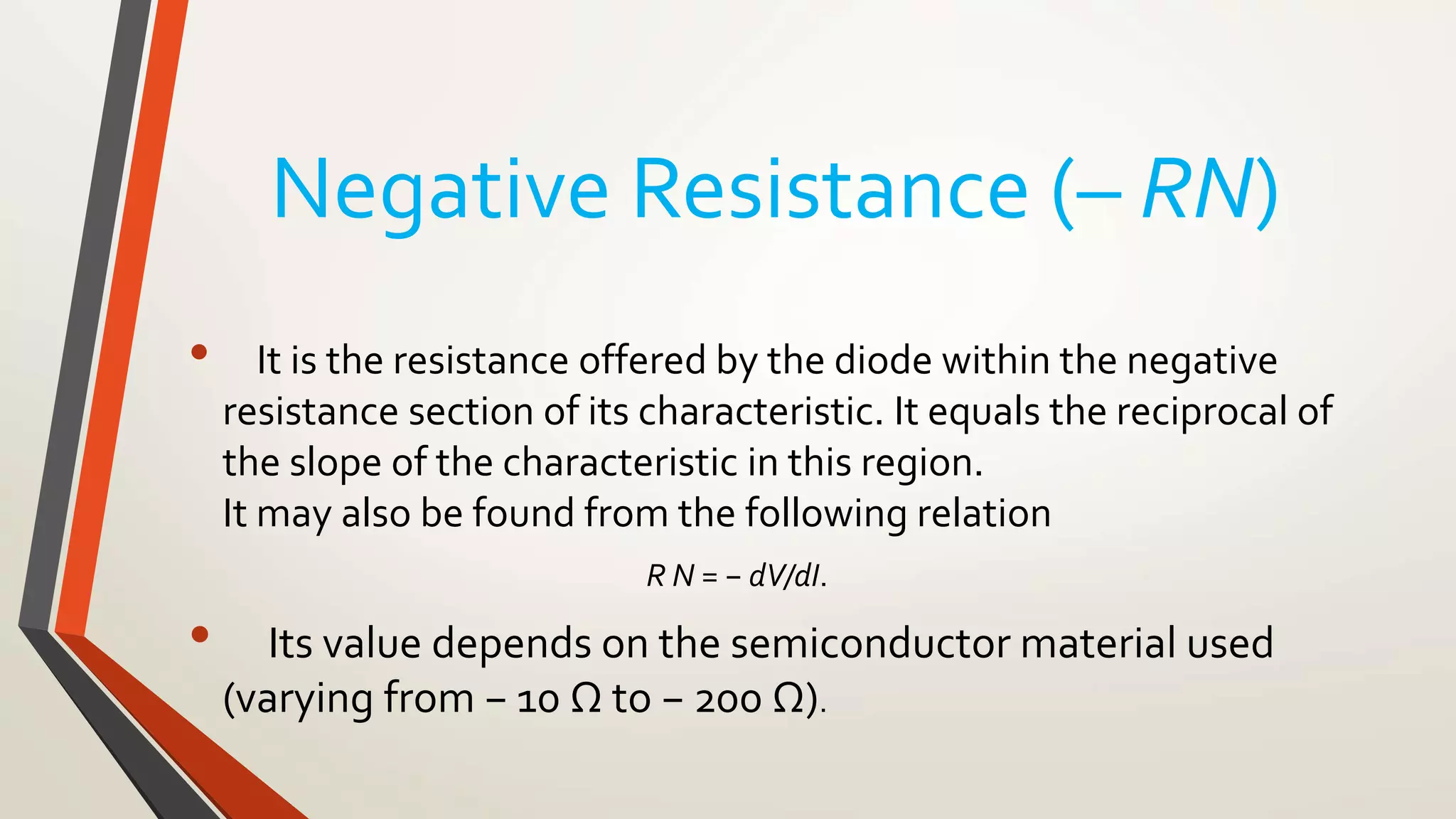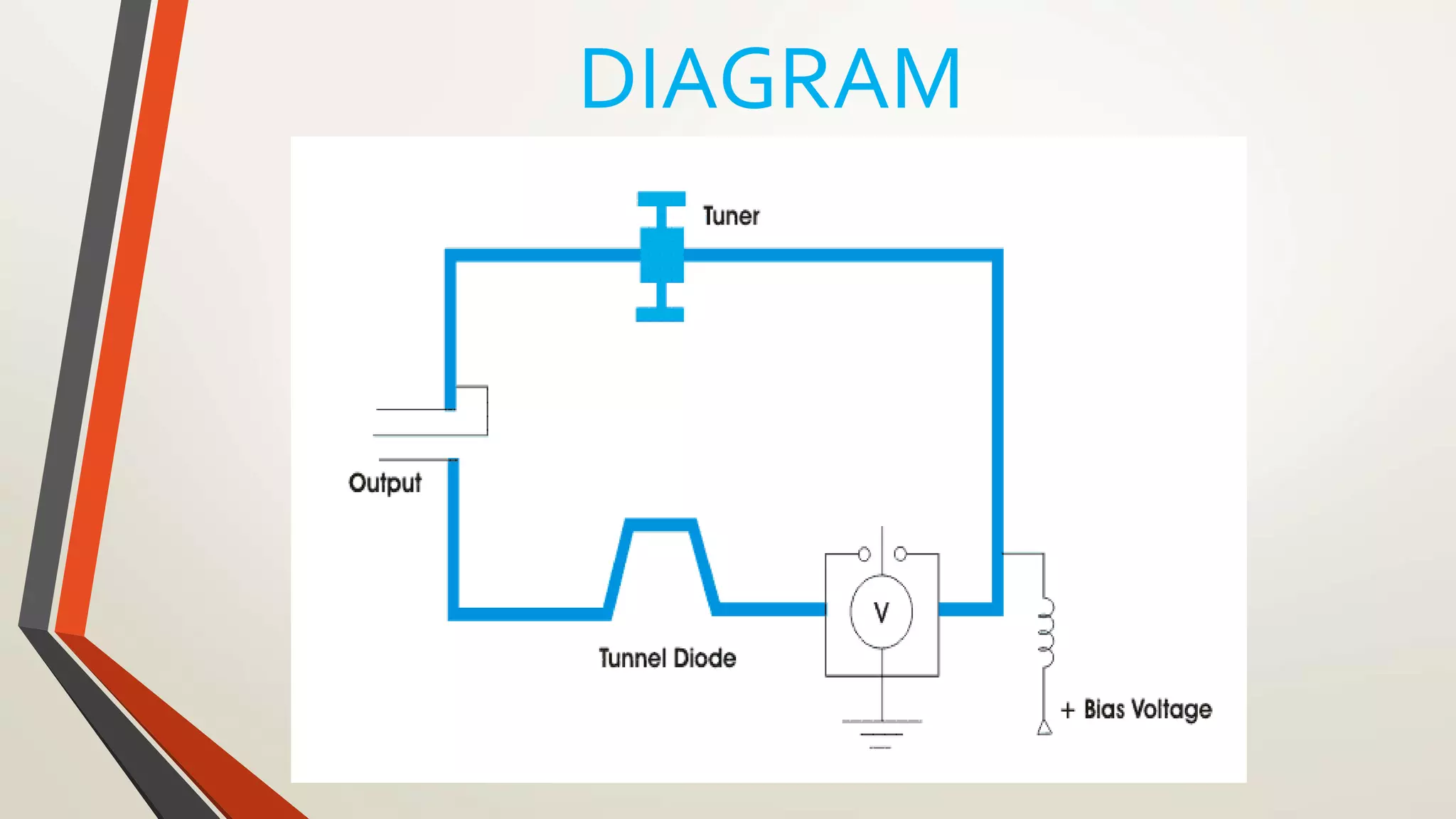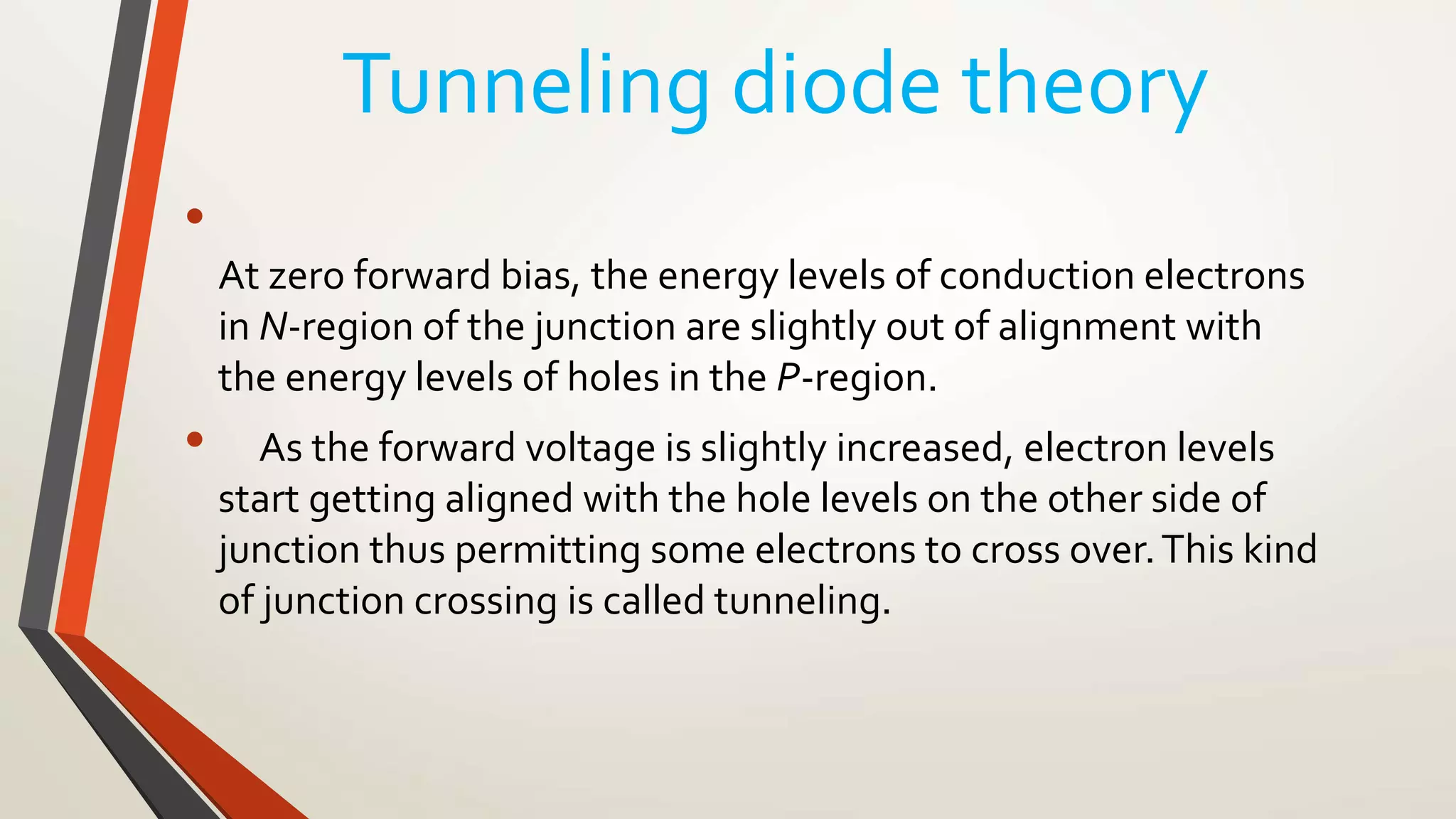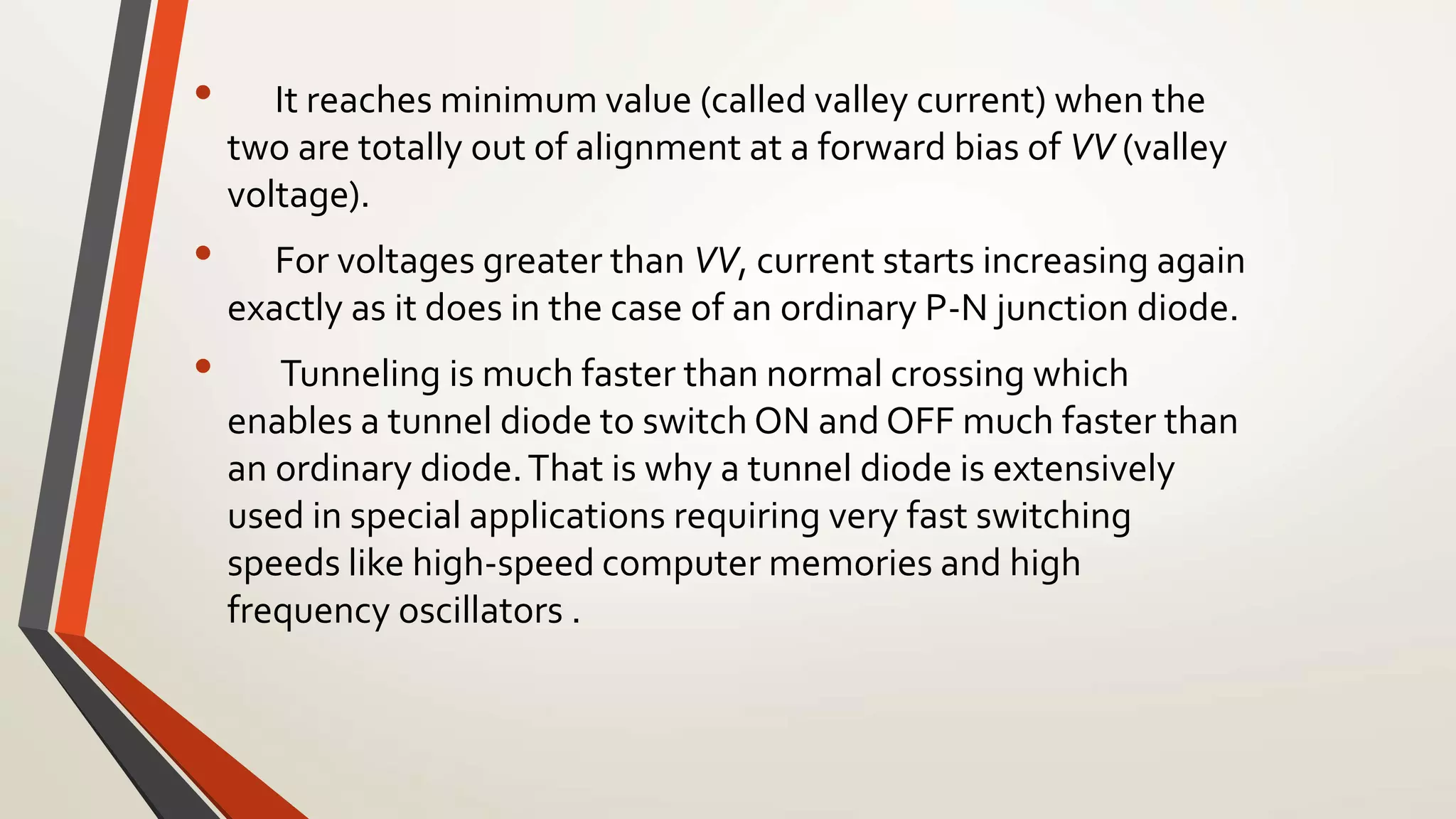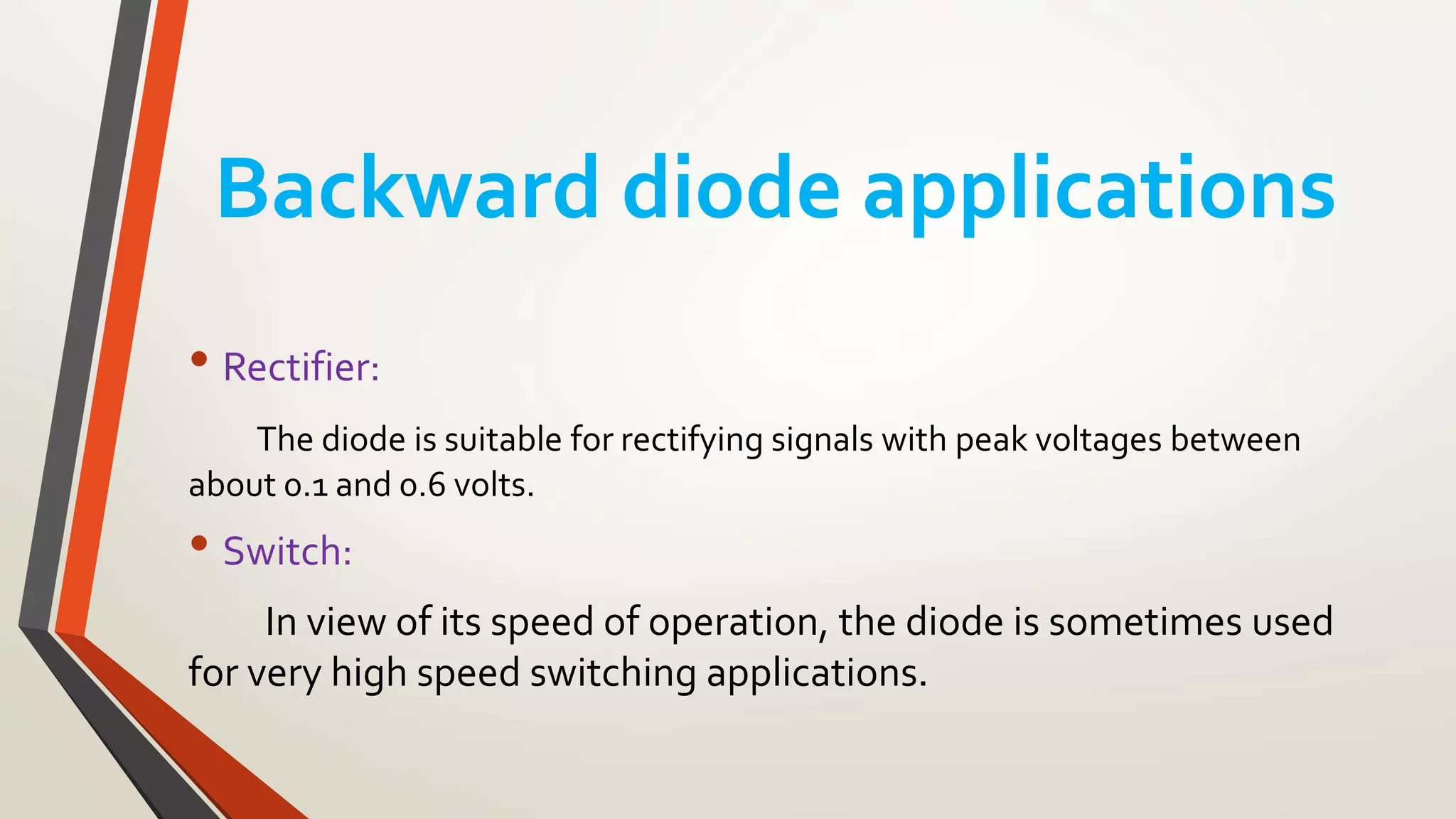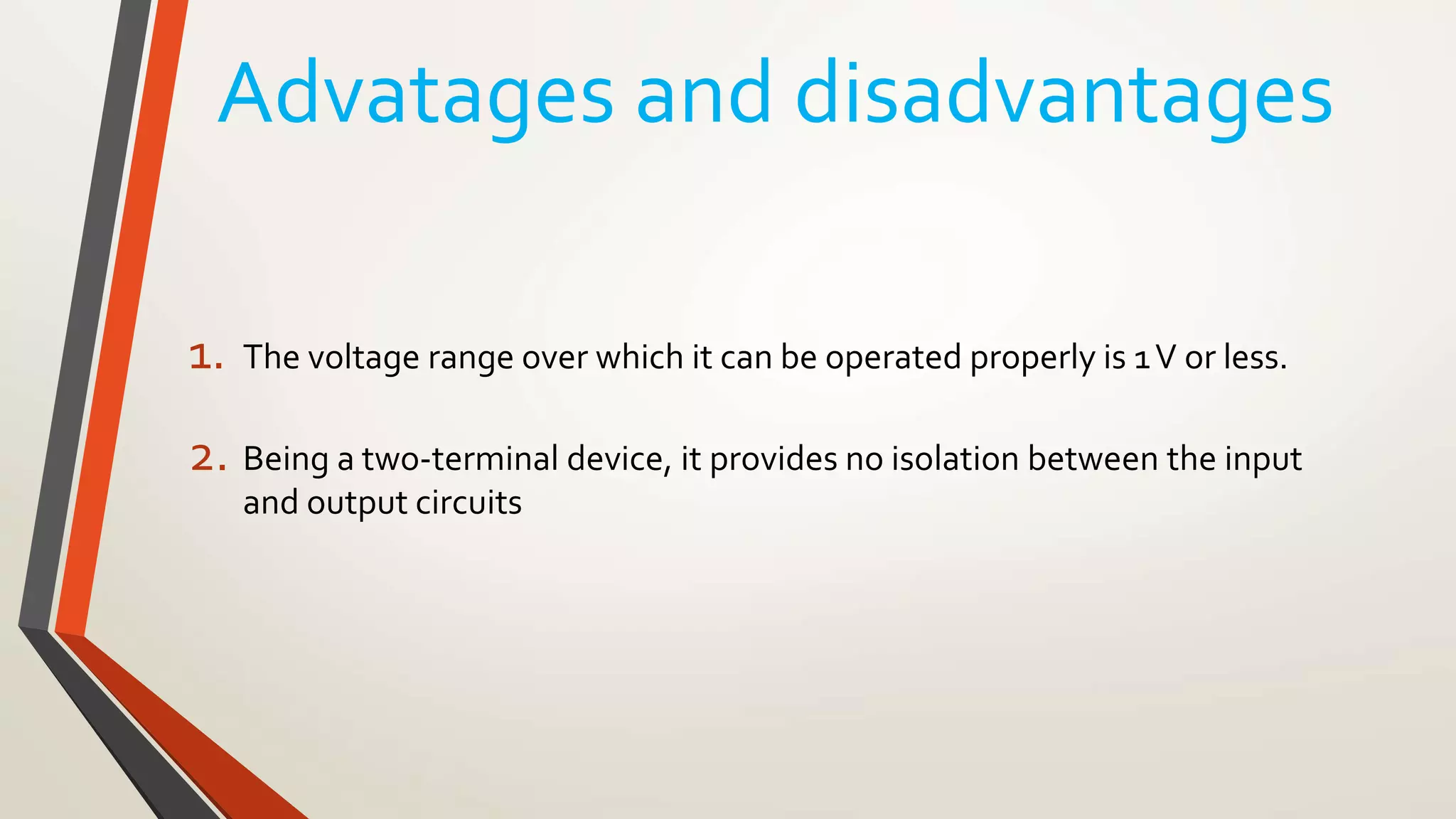Tunnel diodes have the following key properties:
1. They were invented in 1957 and work by allowing electrons to tunnel through a very narrow p-n junction using the quantum tunneling effect.
2. They have an unusual current-voltage characteristic with a negative-resistance region, which makes them useful for high-frequency oscillators.
3. Their main applications are in high-speed switching, signal detection, and frequency generation due to their ability to operate at frequencies into the microwave range resulting from their fast switching speeds.






